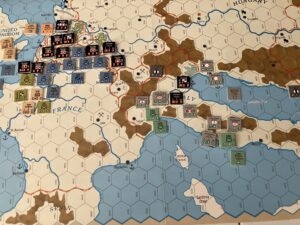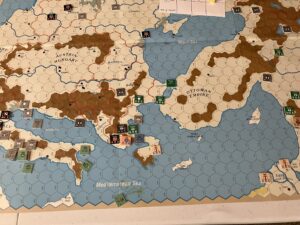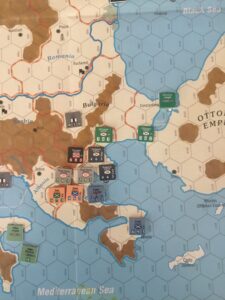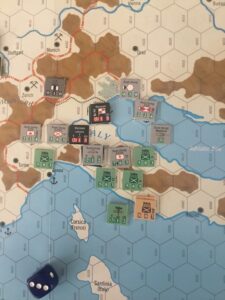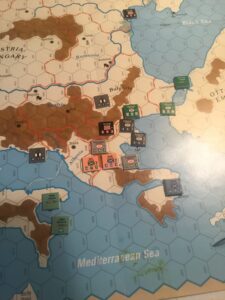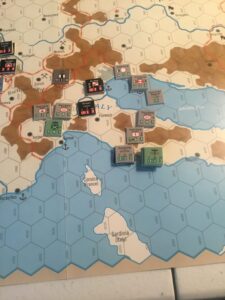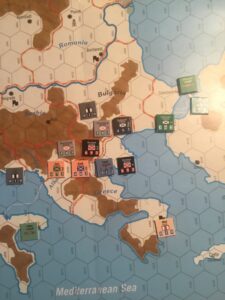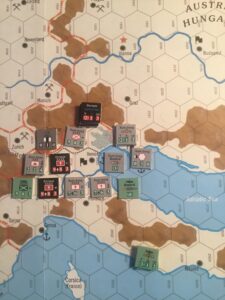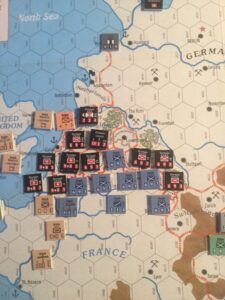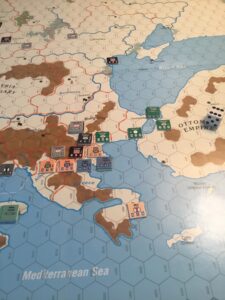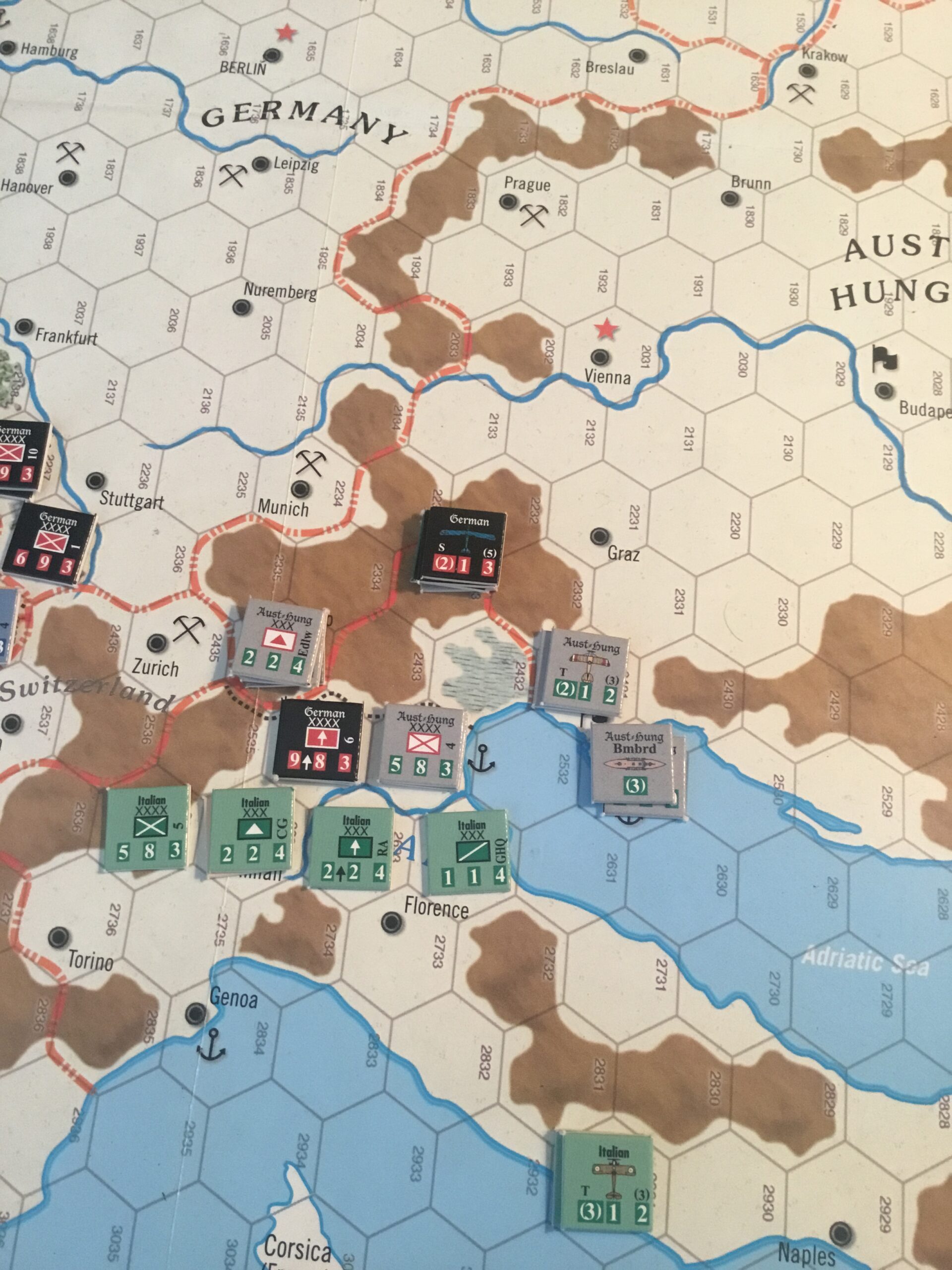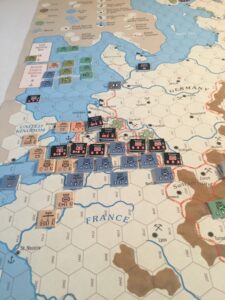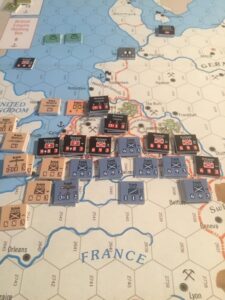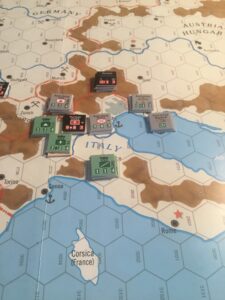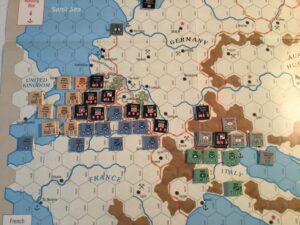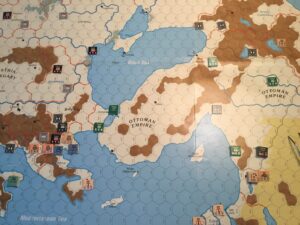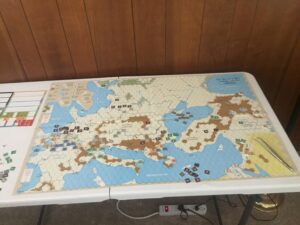Was going to title this post “Abject Failure”, but decided that was a little harsh and I need to cling to some shreds of self-respect.
I didn’t finish the game. In fact, I couldn’t even finish the Central Powers’ turn. I just had to role for the attacks. I could use guests as an excuse, but it was probably the prospect of failure, as the outcomes were grim, and I was hoping for an (more fun) ahistorical outcome.
Here’s where I’m at.
Despite my malingering, I am intrigued by this game. Lots of options for the Central Powers.
The intriguing peripheral strategy is constrained by a limited ability to move reinforcements to Salonika much less the Middle East. Yes, Allied resources can be diverted from the Western Front, but the chances for the Central Powers to force game altering outcomes outside of the West seem very limited.
Maybe their chances are improved using the optional East Front rules, creating additional victory point possibilities, or by playing the 1919 scenario, putting the onus on the Allies to conduct attacks, with the possibility of losing victory points due to losses, and allowing additional time to develop strategies in the east.
Well, to be continued (sure, easy to say) in September when I return to the Sunfish Capital of the World.
